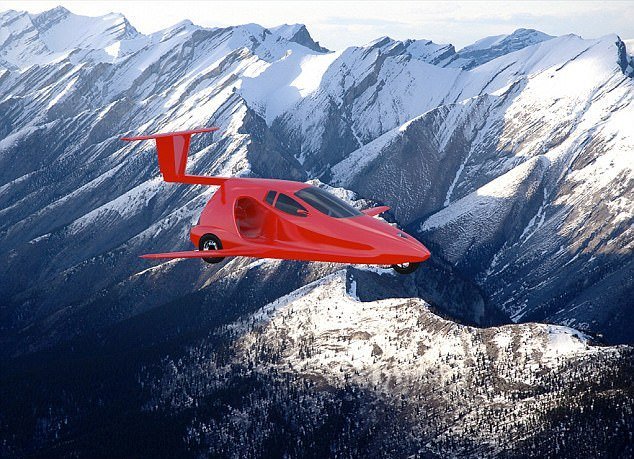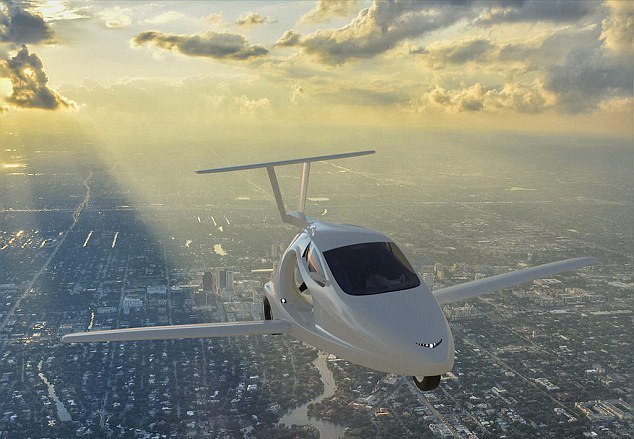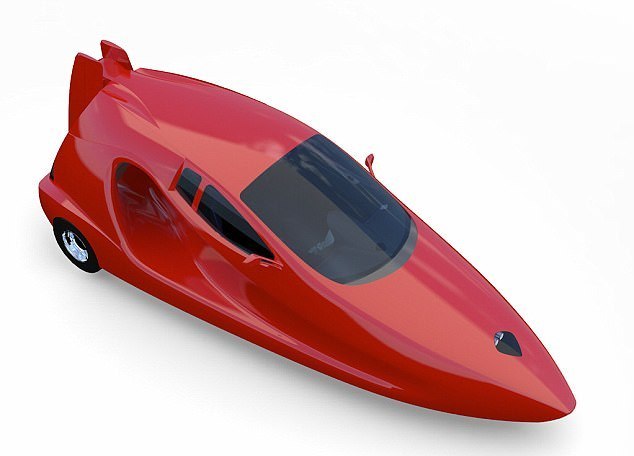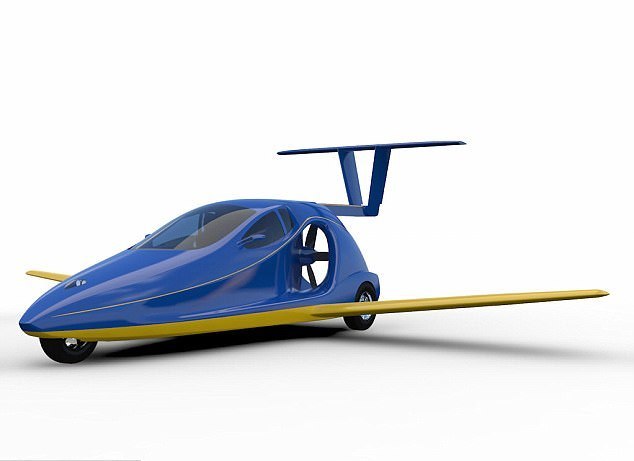
«زلـــزله ۷.۳ریشتری کرمـــانشاه»، «زلزله ۴.۲ریشتری ارومیه»، «زلزله
۴.۸ریشتری لنگرود»، « زلزله ۶.۱ریشتری کرمان» اینها تنها تعدادی از
زلزلههای مهمی است که در روزهای اخیر مناطق مختلفی از ایران را از جنوب تا
شمال و از شرق تا غرب به لرزه درآورده است.
همشهری در ادامه نوشت: زمینلرزههای متعدد روزهای اخیر باعث ترس و وحشت
همه مردم شده است و همین مسئله دلیلی شده تا بازار پیشبینی و شایعات
درباره زلزله در کشور داغ شود، اما قرار گرفتن کشورمان روی کمربند زلزله
علت وقوع زمینلرزههای متعدد است و بیشتر شهرهای کشور در مناطقی قرار
دارند که خطر وقوع زلزله با قدرت بالا در آنها زیاد است اما در پهنه
جغرافیایی کشورمان مناطقی هم هستند که کمخطرتر از دیگر نقاط زلزلهخیز
محسوب میشوند و میتوان از آنها بهعنوان «مناطق سفید» زلزله نام برد؛
مناطقی که احتمال وقوع زلزلههایی با قدرت بالای ۶ ریشتر در آنها در بازه
زمانی حتی هر سه هزار سال یکبار است و از این مناطق میتوان بهعنوان
مناطقی برای سرمایهگذاریهای صنعتی یا انتقال پایتخت و مراکز حساس کشور به
آنها نام برد.
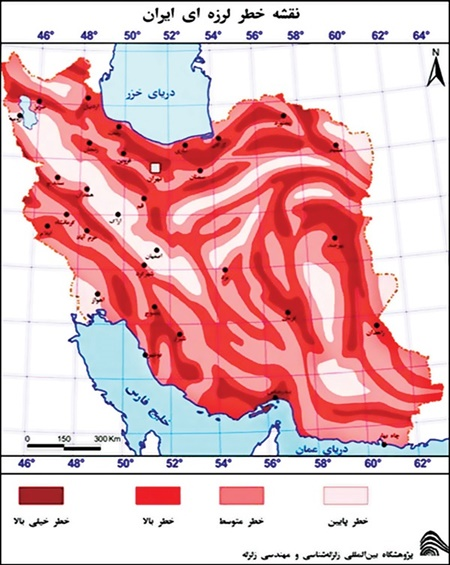
مهدی زارع، استاد پژوهشگاه بینالمللی زلزلهشناسی و مهندسی زلزله با
اشاره به اینکه مناطق کمخطر از نظر زلزله در کشورمان عمدتا مناطقی هستند
که کسی در آنها زندگی نمیکند، گفت: منطقه کویر لوت یا کویر مرکزی ایران
جزو مناطقی هستند که لرزه خیزی کمی دارند و کسی هم در آنجا زندگی نمیکند.
اما نوار سنندج - سیرجان ناحیهای است که شامل استان اصفهان، سنندج، اراک و
همدان میشود که از لرزهخیزی پایینی برخوردار است، همچنین ناحیه جنوب
اهواز به سمت آبادان و خرمشهر نیز همین وضعیت را دارد اما بقیه مناطق ایران
جزو مناطق پرلرزه هستند.
اما چرا به این مناطق، مناطق سفید از نظر زلزله گفته میشود؟ به گفته
زارع این مناطق، مناطق کملرزه هستند چرا که مثلا در اصفهان هر دو تا سه
هزار سال یک زلزله ۶.۵تا ۷ریشتر و هر ۸هزار سال یک زلزله بالای ۷ریشتر
اتفاق میافتد اما در منطقهای مثل جنوب البرز که تهران هم در آن جای گرفته
هر ۲۰۰سال انتظار زلزلهای با قدرت ۶.۵تا هفت ریشتر و هر سه هزار سال
انتظار وقوع زمین لرزه با قدرت ۷.۵ریشتر را داریم. به همین دلیل به منطقه
البرز منطقه خطرناک از نظر زلزله گفته میشود و منطقه اصفهان منطقه کمخطر و
سفید است. زارع ادامه داد: به همین دلیل است که گفته میشود حوالی شهر
گلپایگان و نوار سنندج - سیرجان که پیش از این از شهرهای آن را نام بردم،
منطقه خوبی برای سرمایهگذاری درازمدت و توسعه کشور محسوب میشوند چرا که
از لرزه خیزی کمتری برخوردارند.
به گفته زارع، در نقشه ایران، ۷۸درصد شهرها را شهرهای «لرزان» با خطر
نسبی بالا تشکیل میدهند که در مناطق با ریسک خطر زیاد هستند. با وجود این
خطر زلزله در این شهرها هم متفاوت است؛ مثلا ممکن است در یک منطقه، زلزله
۶ریشتری تعداد کشته و خرابی بالایی داشته باشد اما در منطقه دیگری زلزله
هفت ریشتری تعداد کشته و خرابی کمتری به بار بیاورد.
زارع در پاسخ به این سؤال که چه تعداد گسل فعال در ایران وجود دارد؟
گفت: ۱۲۰گسل خطرناک در کل ایران وجود دارند. همچنین چند سامانه گسلی در
کشور داریم که یک سامانه گسلی از مرز ایران و عراق در مریوان آغاز میشود و
تا شمال بندرعباس ادامه پیدا میکند که طولانیترین سامانه گسلی کشورمان
است. گسل بعدی گسل مکران است که در ساحل دریای عمان و در جنوب شرقی کشورمان
واقع شده و زلزلههای هشت ریشتری در آن اتفاق میافتد (۷آذر ۱۳۲۴وقوع
زلزله ۸.۲ریشتری)که احتمال وقوع زلزلهای با شدت ۹ریشتر هم در آن وجود
دارد. گسل بعدی گسل قطر - کازرون است که دارای چند قطعه ازجمله گسلهای
برازجان، کنارتخته، کازرون و دناست که این گسل تغییراتی را در کف خلیجفارس
ایجاد کرده است.
زارع درخصوص تاب آوری شهرها در زمان وقوع زلزله نیز گفت: تابآوری شهرها
در زمان وقوع زمینلرزهها مشخص نیست و فقط میدانیم که مثلا شهرهای
تهران، تبریز و مشهد در زمان وقوع زلزله ریسک و خطرپذیری بالاتری نسبت به
دیگر شهرها دارند چرا که هم جمعیت بیشتر و هم لرزهخیزی بالاتری دارند. در
عین حال اصفهان لرزهخیزی کمتری نسبت به این شهر دارد اما اگر مثلا در
۵۰کیلومتری اصفهان زمین لرزه بزرگی اتفاق بیفتد نمیدانیم چه اتفاقی در این
شهر میافتد. سلسله جبال البرز هم با توجه به سابقه لرزههای قبلی ازجمله
زلزله منجیل و زلزله سال ۱۸۳۰ شمیرانات و زلزله سال ۱۸۶۵ البرز، محل
فوقالعاده خطرناک و لرزهخیزی است.
امضای تفاهمنامه با ایتالیاییها درخصوص راهاندازی سیستم هشدار سریع زلزله
معاون پژوهش و تحصیلات تکمیلی پژوهشگاه بینالمللی زلزلهشناسی و مهندسی
زلزله از امضای تفاهمنامه با ایتالیا درخصوص نصب و راهاندازی سیستمهای
هشدار سریع زلزله به همشهری خبر داد و گفت: این سیستمها توانایی این را
دارند که بسته به فاصله موقعیت مکانی زمین لرزه، از چند ثانیه قبل از وقوع
زمین لرزه، با تعیین موقعیت و بزرگی، هشدار لازم را ارسال کنند. این هشدار
برای قطع بعضی از شریانهای حیاتی چون سیستم گاز شهری، آب و برق بسیار مؤثر
و کارآمد هستند و نقش بسیار زیادی در کاهش خسارات و تلفات جانی ناشی از
وقوع زمین لرزههای بزرگ دارند.
دکتر محمد تاتار به همشهری گفت: درصورت فاصله زیاد چشمه زمین لرزه از
شهرها و مناطق مسکونی، زمینلرزههایی که در مناطق اقیانوسی و مناطق زلزله
خیز روی میدهند، امکان اطلاعرسانی به مردم از طریق به صدا درآوردن آژیر
یا ارسال پیام هشدار روی تلفنهای همراه نیز میسر است. در زمینلرزه اخیر
مکزیکوسیتی که ۱۸مهرماه سالجاری با بزرگی ۷.۱ریشتر اتفاق افتاد، عملکرد
خوب سیستم هشدار سریع زلزله دیده شد که نزدیک به ۲۰ثانیه قبل از رسید امواج
مخرب زمین لرزه به شهر، موجب به صدا درآمدن آژیرها شده بود و این موضوع
در کنار ساختوساز ایمن، از مهمترین عوامل کاهش تلفات این زمینلرزه مهیب و
مخرب بهحساب میآمد.
تاتار با اشاره به اجرای این طرح در کشور گفت: این سیستم ابتدا در شهر
تهران و بهصورت پایلوت راهاندازی میشود و سپس به سایر نقاط لرزهخیز،
تأسیسات حساس و یا شهرهای پر خطر کشور تعمیم داده میشود. البته این سیستم
به تنهایی نمیتواند از میزان تلفات کم کند؛ آموزش مردم و میزان آشنایی و
آمادگی آنها برای عملکرد صحیح قبل، هنگام و پس از وقوع زمینلرزه، نقش حائز
اهمیتی در کاهش تلفات و صدمات ناشی از وقوع زلزلههای بزرگ دارد.
معاون پژوهش و تحصیلات تکمیلی پژوهشگاه بینالمللی زلزلهشناسی گفت:
ایران پس از آمریکا، ژاپن، مکزیک، ایتالیا و ترکیه وارد این حوزه شده است.
چنین سامانههایی جهت توقف قطارهای مترو، توقف سریع کارکرد شبکههای گاز،
آب، و برق، همچنین متوقف کردن فعالیت نیروگاهها، پالایشگاهها و سایر
تأسیسات حساس، کلیدی و مهم چند ثانیه قبل از رسید امواج مخرب زمینلرزه
کارایی بسیار مؤثری دارند.
وی درخصوص نحوه اطلاعرسانی در زمان زلزله
گفت: اگر سامانههای هشدار روی گسلهای اطراف تهران نصب و راهاندازی شود،
پس از وقوع زلزله و پیش از رسیدن امواج برشی به شهر که مخرب هستند، اطلاعات
لازم بهصورت رادیویی به تهران ارسال خواهند شد که میتوانند با اتصال به
شبکههای شریانهای حیاتی منجر به توقف بلافاصله آنها و یا اطلاعرسانی به
مردم شود. البته با توجه به فاصله نهچندان زیاد گسلهای فعال در گستره
تهران، این هشدار حداکثر میتواند ۱۰ تا ۱۵ ثانیه زودتر از رسیدن امواج زلزله
اعلام شود.
وی با اشاره به زلزله اخیر سرپلذهاب در استان کرمانشاه گفت: در زلزله
اخیر که از لحاظ بزرگی در یکی، دو دهه اخیر بیسابقه بوده است، بهرغم وسعت
خرابی خیلی زیاد، خوشبختانه زمینلرزه با تلفات کمی همراه بوده است. مطابق
بررسیهای میدانی همکاران ما در پژوهشکده مدیریت بحران این پژوهشگاه، وقوع
یک پیش لرزه قبل از زمین لرزه اصلی و آموزشهای همگانی که در زمینه زلزله و
از طریق برگزاری مانور زلزله یا در کتابهای درسی به دانشآموزان داده شده
و از طریق آنها به خانوادهها منتقل شده است، نقش بسیار مؤثری در کاهش
تلفات داشته است.
وی درخصوص اینکه مطالب منتشره در کانالهای تلگرامی در مورد پیشبینی
زلزله چقدر واقعیت دارند، گفت: مطالب مندرج در کانال تلگرامی مربوط به
پیشبینی زلزله اصلاً مبنای علمی نداشته و به هیچ عنوان صحت ندارد.
گردانندگان این کانالها دارای هیچگونه تحصیلات دانشگاهی یا سابقه فعالیت
در این زمینهها نیستند. از برخی از ایشان بارها جهت حضور در پژوهشگاه و
بحث راجع به ادعاهای ایشان دعوت بهعمل آمده است، ولی هیچگاه دعوت
پژوهشگاه را لبیک نگفتهاند که دلیل آن مشخص است. زلزله پدیدهای طبیعی اما
بسیار پیچیده است و دهها سال تحقیقات انجام گرفته در معتبرترین
دانشگاههای دنیا نیز هنوز به پیشبینی موفقیتآمیز زمین لرزه منجر نشده
است. انجام کارهای آماری روی کاتالوگهای موجود یا ادعای الهام از نیروهای
ماورای طبیعی، اجرام آسمانی و امثالهم هیچکدام پیشبینی زمان وقوع زمین
لرزه را میسر نمیسازد. مردم هم باید اطلاعات مربوط به زلزله را فقط از
طریق مجاری قانونی و علمی، چون سایت پژوهشگاه و یا وبگاه شبکه لرزهنگاری
کشوری دنبال کنند.
رفتار گسلهای تهران چگونه خواهد بود؟
مهدی زارع، استاد پژوهشگاه بین المللی زلزله شناسی درخصوص مناطق پرخطر
تهران در زمان وقوع زلزله گفت: بسته به اینکه کدامیک از گسلهای تهران
فعال شود میزان خرابی در مناطق متفاوت است اما بهدلیل بافت سنتی و قدیمی
این مناطق و سطح بالای آبهای زیرزمینی، بافت فرسوده و تراکم جمعیت بیشتر
که در مناطق ۹ تا ۲۰ تهران شاهد هستیم این مناطق جزو مناطقی هستند که ریسک
آسیبپذیری و خطرپذیری بیشتری در زمان وقوع زلزله دارند. این استاد
پژوهشگاه بینالمللی زلزلهشناسی گفت: گسلهای تهران در پهنه شمالی و جنوبی
تهران بیشتر واقع شدهاند. گسل مشا در فاصله ۳۵کیلومتری شمال تهران در
روستای کلان از توابع لواسان است که با گسل شمال تهران تلاقی دارد و این
منطقه یک منطقه خطرناک برای زمان وقوع زلزله است.
در ۱۰کیلومتری این گسل شهر پردیس را داریم که ساخت و سازهای زیادی در آن
انجام شده و جمعیت زیادی هم دارد که در این پهنه احتمال تکانهای شدید و
از هم گسیختگی سطح زمین بیشتر است. اما نکتهای که نباید به آن بیتوجه بود
این است که در تهران ساختمانها و برجها در روی گسل شمال تهران بنا
شدهاند و در زمان وقوع لرزش در این گسل با خرابیهای زیاد مواجه خواهیم
بود. گسل شمال بهدلیل برجسازیهای فراوانی که در این منطقه انجام شده و
کوچهها هم تنگ است احتمال اینکه ماشینهای آتشنشانی و اضطراری نتوانند
خودشان را وارد کوچهها کنند، هست. با وجود اینکه تراکم در این منطقه کم
است ولی برجسازی زیاد است. گسل جنوب هم بهدلیل بافت فرسوده آن مورد توجه
است بهخصوص در منطقه۱۶ نازیآباد زیرا تقاطع گسل مشا و جنوب است. گسل مشا
هم گسلی است که از سمت شرق میآید و زلزله فیروزکوه متصل به این گسل بود.
زارع درخصوص میزان تخریب هر یک از این گسلها نیز گفت: تخریب و آسیبهای
بعد از زلزله بستگی بهشدت، محلی که زلزله در آن واقع شده و همچنین ساعت
وقوع زلزله دارد. پس امکان پیشبینی میزان تخریب برای هر گسل بهصورت مجزا
وجود ندارد، اما مثلا میتوانیم بگوییم که گسل شمال تهران با توجه به تراکم
جمعیت و گسل جنوب تهران با توجه به بافت فرسوده و جمعیت بالا خطرناکترین
گسلها در تهران هستند. با این حال گسلهای مشا، ایوانکی، پیشوا، کهریزک و
رباط کریم و جنوب کرج و حتی گسل الموت و طالقان هر کدام میتوانند لرزه
خیزی بالای ۶ ریشتر داشته باشند که به تهران آسیب جدی وارد کنند. همینطور
گذر گسل پردیسان از بزرگراه همت که ساخت و سازها و برجهای زیادی ازجمله
برج میلاد در آن واقع شده درصورت فعال شدن میتواند خرابی زیادی را به بار
بیاورد.
خطرناکترین گسلهای ایران
۱-البرز - مشا، ایوانکی، کهریزک، پیشوا، رباط کریم
۲-تبریز - شمال تبریز
۳-گسل کوه خضر - از میان بخشی از شهر قم عبور میکند
۴-گسل اصلی جوان زاگرس - از کنار شهر مریوان عبور میکند
۵-گسل غربی فروافتادگی دریاچه ارومیه - از کنار شهر ارومیه عبور میکند
۶-گسل بافران - از جنوب شهر نایین عبور میکند
۷-گسل هیرمند - از نزدیکی شهر زاهدان عبور میکند
۸- گسل مکران - از نزدیکی شهرهای جاسک و چابهار عبور میکند
۹- گسل ساحلی بندرعباس - از شهر بندرعباس عبور میکند
یکشنبه 19 آذر 1396 ساعت 18:00


